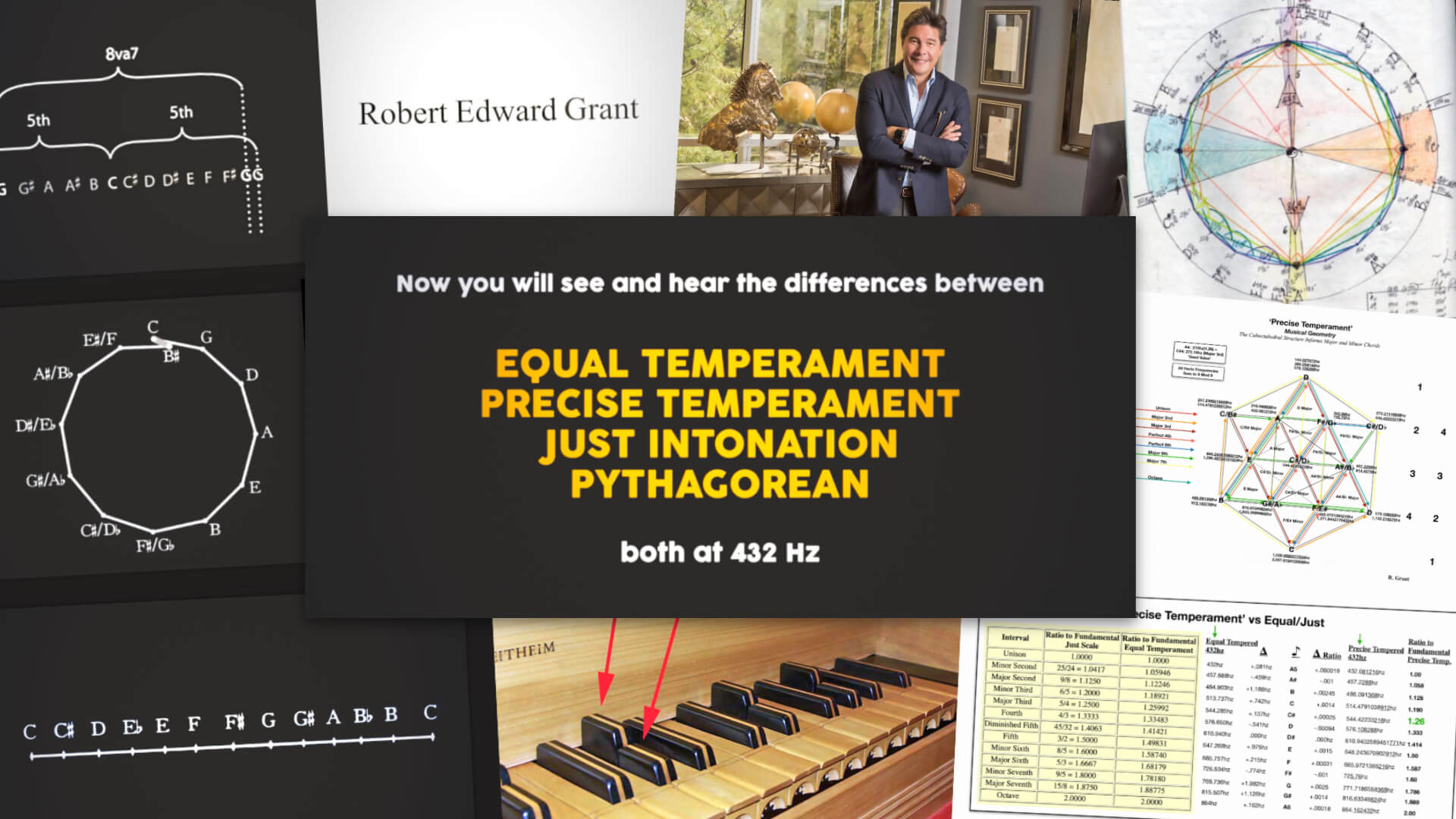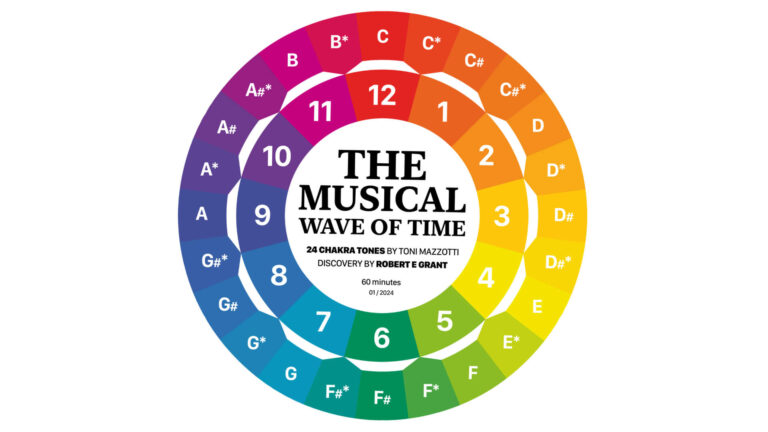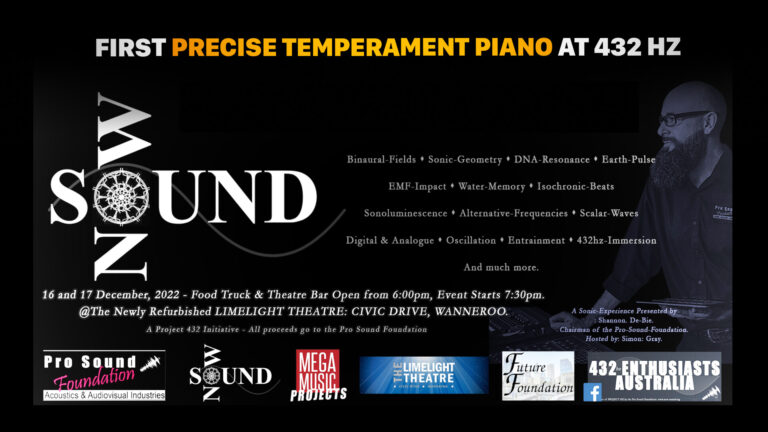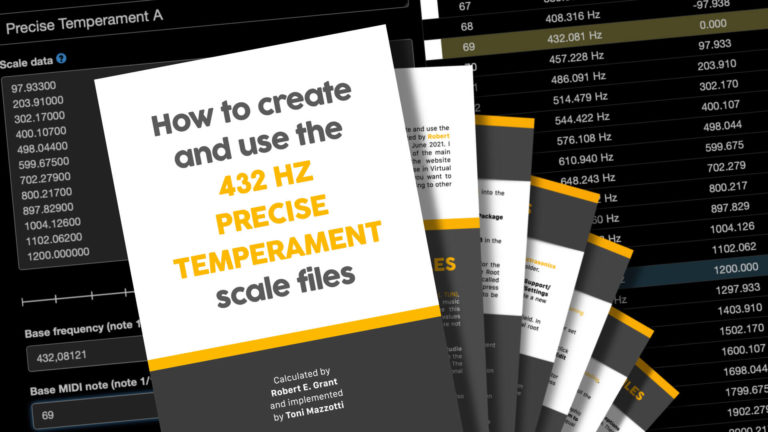“The problem with “Just” Scale Tuning is that while the mathematical intervals are considered “perfect”, due to the “Major 3rd Problem” (explained in slides), the octaves never quite double through Major 3rds. The mathematical ratio of the Major 3rd is 5/4 (1.25x). Well, 1(1.25^3) = 1.953 and ≠ 2.00. Whereas 1(1.26^3) = 2.00. This one ratio throws the entire Pythagorean Just Tuning out of whack despite its clear mathematical correspondences for all other notes. Equal Temperament is also problematic because it simply cuts the octave range of frequency into 12 equal parts (based on 2^.5), when there is slight variation between tonal transitions exhibiting yet again wave behavior. Also, equal temperament loses a lot of the benefit of the Base 9 mathematical system and depending on your sound system/software, the numbers may no longer sum to 9 in modular arithmetic.
How to solve this conundrum? A potential solution: Precise Temperament Tuning. By simply replacing Major 3rd’s 1.25 with 1.26 (derived as 2^1/3 instead of 5/4), this brings the entire scale into very close equivalence with Equal Temperament tuning. Additionally, there is another consequence of this 1.26x usage seen on the very last slide: All of the notes create a decimal extension with “Just” undertone dominant chords represented in the decimal extension (for example Note D5: 576.108288hz, whereas 576 = D in Just Tuning); 108hz is an A3 in Just tuning and 288 is a D4 in Just tuning. This “BLOCKCHAIN-style” chordal representation appearing in the decimal extensions is one of the natural consequences of the 1.26x replacement for the Major 3rd when used with Pythagorean “Just” values (abandoning 1.25x).
But how does it sound? Based on the ratios and the very close equivalence to Equal Temperament values in 432hz, I am quite sure it will sound great. Another plus is that all the new “Precise” frequencies Sum to 9 naturally just like the sum of angles of ALL regular polygons/polyhedra/polytopes!” – Robert’s announcement at 20 July 2022 on Facebook.
COMPARISON
In the video below you will see and hear the differences between Precise Temperament, Equal Temperament, Just Intonation and Pythagorean, both at 432 Hz.
WHY USE PRECISE TEMPERAMENT TUNING INSTED EQUAL TEMPERAMENT
See in the video below the logic behind PTT (Precise Temperament Tuning) and why there is no reason for you to use Equal Temperament in the production of your songs at 432 Hz.
ABOUT ROBERT E. GRANT
Robert E Grant is a Californian polymath with more than 30 patents mainly in the field of medical technology and data encryption. He is also a brilliant mathematician who has managed to decipher the millennial mystery of prime numbers, on which world cryptography is based. He is currently selling a more secure encryption.
Robert is also one of the main activists of the number 432, attributing to this number a great mathematical, geometric and cosmological significance. And in July 2020, he released the Precise Temperament, calculated specifically for 432 Hz.
Watch this 18-minutes documentary produced by Taylor O’Sullivan & Peter Amodeo Gould.
TRY PRECISE TEMPERAMENT TUNING
To learn how to create and use the 432 Hz Precise Temperament Tuning files, to download a zip file with the 3 main formats of musical scale and a pdf guide, and also to listen more songs with Precise Temperament Tuning, click here.
BEFORE TRY
1. Equal Temperament is considered the standard in Western music because it allows the use of all the root notes, making the distances between the intervals all equal, and thus allowing the transposition of the songs. However, the cost of this alignment is a small disharmony in all chords.
2. Unequal Temperaments are subdivided between the playable in all root notes, also called Well Temperaments, and the non-playable in all root notes. Unequal Temperaments playable in all root notes, will sound better than Equal Temperament in adjacent root notes in the Circle of Fifths, but will sound less harmonious in opposite root notes.
3. Precise Temperament is an unequal temperament considered playable in all root notes for most modern repertoire. When tuning an acoustic piano with it, you must choose the root note, which by default is A or C. Listen to Jason Martineau’s improvisation “All Around the Wheel“, where the playability around the Circle of Fifths is tested with a virtual piano tuned in C.
4. The choice of the chords used in video comparisons are based on the four types of triads: Major, Minor, Augmented and Diminished, and on the contemporary use of the sevenths. The Diminished chord is not used directly, but is included in the Minor7b5 used in the tests; These are the chords used in this sequence: Major Augmented, Major, Major7, Minor, Minor7 and Minor7b5 (which includes Diminished). Being played in 4 octaves at the same time.
5. The Pythagorean and Just musical scales were included in the tests for illustrative purposes only. They are not useful scales for the context of contemporary Western musical harmony.
6. Is it possible to change the temperament of a polyphonic acoustic instrument previously recorded using the Melodyne software. Virtual instruments can be tuned using these scale files. See the list of microtonal music softwares.
CREDITS
Precise Temperament by Robert E. Grant
Images from:
Robert E. Grant Documentary
TIME AI – Quantum Encryption by Crown Sterling
Scale Software by huygens-fokker.org
Music Technology:
Logic Pro by Apple
Steinway Grand Piano and Alchemy from Logic Pro
The Snail analyzer by IRCAM LAB
ScaleWorkshop web application by microtonal artist Sevish
Help me make more 432 Hz content with some financial support. Thank you 🙂







